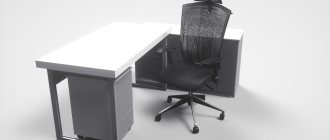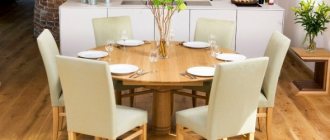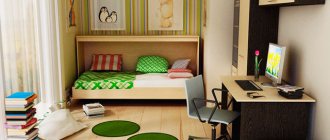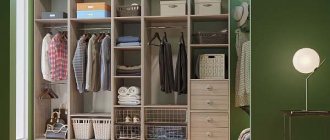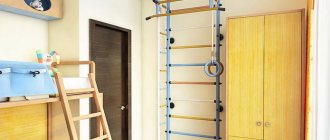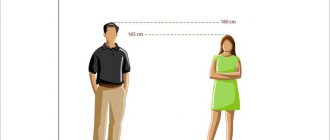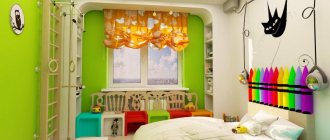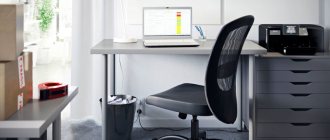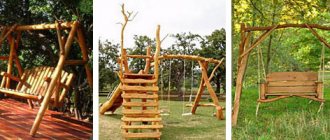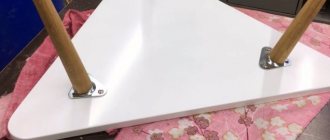The height of the desk is a standard parameter according to GOST, which manufacturers of furniture for offices or home work are guided by. The working range of tables for industrial purposes is usually focused on a certain size, calculated according to ergonomic standards and designed for the average person. However, what sits at a computer or desk is not a mannequin obtained by manipulating growth statistics and which has become the average figure of the standard for an adult, but a specific person, with his own anatomical characteristics, preferences and manners.
Writing Accessory Height Standard
Lid level standards
To determine the standard dimensions of a desk for a schoolchild or an adult, manufacturers use the relevant regulatory documents. The dimensions of the furniture depend on its design and purpose: tables can be straight, corner, or adjustable to suit the child’s age.
The distance from the floor to the top board, the length of the lid, the depth of the under-table space - these values characterize furniture for paper work. Its main parameter is the height of the desk, which is selected according to the person’s height.
Height is the main parameter of a desk.
Computer
Despite the efforts of developers, office ergonomics and the theory of expediency, which have given rise to numerous options for modern devices for working at the most popular desktop of our time, it is the computer desk that causes the greatest number of difficulties in choosing.
In the bedroom
A correctly selected option can, if necessary, serve as a desk. Especially if it does not have a huge processor, but a laptop.
Excess of surface above the floor for an adult
For a straight layout or a corner cover model, the level of the top surface is the same. According to the standard, a desk in a house can have different heights. It depends not only on the user’s height, but also on the accessories placed on the tabletop:
- size according to GOST for the height of the lid for drawing and writing – 72-78 cm;
- office equipment installed on top is a reason to reduce the lower limit of the distance to 650 mm;
- world practice: with a height of 1.5-1.6 m - height 60 cm, 1.75-1.83 - 70-80 cm, 1.9-2 m - 85-90 cm.
A desk for an adult has its own parameters.
The comfortable level of the tabletop for children's furniture is different.
Adjustable Models
The ability to adjust the tables allows you to quickly adjust the size to the individual physiological parameters of a person. In addition, given the need to save space in city apartments, adjustable models become multifunctional: if necessary, an adjustable table can be converted from a desk to a dining or kitchen table.
Currently, models are produced equipped with an electronic adjustment mechanism. There are options in which it is possible to increase the surface area due to retractable elements.
The only drawback of such models is their low strength. They are usually designed for a load of 40 to 50 kg.
Student's desk surface level
For furniture for educational institutions, GOST 11015-93 applies, which takes into account the requirements of the international standard ISO 5970-79.
There are international standards for school furniture.
Student desks are made as single or double desks. They can be characterized by constant parameters or be adjustable in height within the range of 46-82 cm in increments of 60 mm.
The Russian standard provides for 7 desk height numbers for students:
- The average height of a schoolchild is 105 cm (100-115), tabletop height is 0.46 m.
- Children 120 cm (115-130) – 0.52 m.
- Guys 135 cm (130-145) – 0.58 m.
- Students 150 cm (145-160) – 0.64 m.
- High school students 165 cm (160-175) – 0.70 m.
- Above average: 180 cm (175-185) – 0.76 m.
- Tall graduates: above 185 cm – 0.82 m.
The given figures are a guideline when choosing a comfortable school desk. Level-adjustable designs allow you to use the furniture for more than one year, and adjust the height of the lid above the floor as the student grows.
With the help of adjustments, the furniture can be adjusted to the individual parameters of the student.
Please note: the adjustable design is more expensive than the usual one, the maximum load on the upper surface is 45-50 kg.
How tall should a desk be?
The average apartment is inhabited by a family consisting of men, women and children of different ages. Each of them needs an arena for its inherent type of activity. This is a table where you can write, work on the computer, cook, have lunch, leaf through magazines, engage in your favorite hobby or create.
What height standard should be for an adult according to GOST?
It is difficult to adapt the adult world to a child’s world, so there are two ways out of this situation: purchase a table with the proper parameters for a child or try to adapt adult furniture to it.
Width and other characteristics
The standard for adults sets the minimum tabletop dimensions in plan: 800x500 mm. The maximum dimensions are not standardized, but in practice they do not exceed 120x95 cm.
With school desks it is more complicated: the parameters are given for each table number. Main dimensions:
- working surface width (depth), not less than: 45 cm for No. 1, in other cases – 50;
- table top length for a single desk ≥60 cm, for a double desk – 120 for students of all ages;
- legroom: width for numbers 1-4 – 420 mm, for others – 450.
School furniture standards differ from home furniture.
At home, a place for a student should be at least 60 cm deep and ≥1 m long. The optimal size is 120x60 cm, the space for hands on the tabletop is 50x50 cm.
The home desk should be slightly wider than the school desk.
Important! There should be no sharp edges on the lid; the corners must be smoothed.
Corners on children's furniture should not be sharp.
Chair for schoolchildren
Photo: www.freepik.com
Schoolchildren have to sit for a long time - longer than most adults. Therefore, the chair should be comfortable specifically for your child: this way, the student’s back will always be in the correct position.
Chair or armchair
To parents - and to children themselves - a chair for a schoolchild's workplace seems a more attractive option than a regular chair. But, perhaps, the only advantage of armchairs over chairs is a more aesthetic appearance.
In terms of other parameters: ease of design, assistance in the formation of correct posture, low price - the chairs win.
Rules for selecting dimensions
The required level of furniture is usually determined based on the user’s height by multiplying its value by a correction factor of 0.45. In this way, a desk is chosen for a person of any age: for a short person, 160 * 0.45 = 72 cm is enough, and for a tall person, 180 * 0.45 = 81 cm is enough.
The height of the furniture is determined using a special formula.
At the same time, pay attention to other important parameters:
- The width (depth) is selected according to the planned use. Without installing office equipment, 60 cm is enough; to place a computer or printer you need a table top of 80-90 cm.
- A chair is purchased as a set: the feet should be on the floor. The shin and thigh are positioned at an angle of 90º, the back is straight.
- A desk cabinet with drawers will help keep your workspace tidy.
Additional information: to visually verify the correctness of the choice made, you need to sit on a chair: the solar plexus should be at the level of the top board.
If you sit on a chair, the board should be at the level of your solar plexus.
Standard values are established by the GOST technical document: cover level - from 650 to 820 mm, plan dimensions - at least 80x50 cm. The recommendations of doctors and designers are taken into account. Dimensions recommended for most users: height – 0.75 m, length – 1.2 m, width or depth – 0.8 m.
Varieties
For office/office
The working option has an expensive base. Functional. By type, there are angular, linear p- and l-shaped models. The boxes are located close.
Some designs have built-in floor drawers, shelves, niches, and a chair
Advantages of cabinet models:
- Massive sizes.
- Convenience, comfort.
- The boxes are located nearby. Roomy.
- Wide seating area.
- The length of the product is at least 2 meters.
- Durable material.
- Varied design.
- Height adjuster (not available on all models).
A designer desk for a work area in a home can say a lot about its owner.
For schoolchildren
It is imperative that the design is suitable for the height and age of the schoolchild. The table should be functional, especially for a first grader.
Advantages of school models:
- suitable size;
- drawers for storing office supplies;
- wide tabletop;
- adjustable height (not available on all models).
A desk with shelves is a practical solution for a schoolchild
Table height for a child according to height table: height standards, other parameters
Table height standards for a child
It is important to know that any desk will not work. It is necessary to choose one that will allow the child to maintain correct posture when sitting behind it. To help parents cope with this task, there is a set of rules. They will help you determine the size of your study furniture. Basic standards for preparing a workplace:
- The proportions of the height of the chair and table should be within 2 to 3. That is, with a chair of 50 cm, the table should be 75 cm high. Deviations from this norm should be minimal.
- With a height of 100–115 centimeters, the height of the chair should be within 32–35 cm. The height of the table in this case is 50–53 centimeters.
- When choosing the right chair, the student’s feet should reach the floor. The knees are bent at a right angle.
- The child’s elbows are located exactly on the surface of the table, the tabletop itself is located flush with the diaphragm.
- The distance from the knees to the tabletop is 10–15 centimeters.
The depth of the chair and table are also important indicators. The seat should not be too long. When the student rests on the backrest, make sure it does not press into the hamstrings. The tabletop, on the contrary, should not be short. All educational supplies should fit on it without any problems.
How to choose the height of a table for a child according to height: table
Avoiding future health problems for your child is a priority. To do this, you need to choose the right furniture for him. To make it easier for parents to decide, there is a special table that shows the required sizes of furniture, depending on height.
The information given in this table will help young parents make their choice. But you shouldn't rely only on it. A good idea when buying furniture for study is to take your child to the store with you, sit him at the table, and make sure he is comfortable enough.
What other parameters need to be taken into account
In order for your studies to be as comfortable as possible, you need to pay attention to other parameters. Not only the height of the furniture determines the quality of the work behind it. It is also important not to ignore the following:
- Incline. A tabletop located at a slight angle will reduce eye strain. In this case, writing will also be a little more convenient - hand tension will decrease.
- Safety. Pay attention to the presence of sharp corners to avoid the possibility of impacts.
- Color and design. You should not buy a table with too bright colors or an unusual shape. This will distract the student from studying.
- Material. It is better not to buy furniture made from expensive materials for studying. Children will quickly stain it with ink and paints. It's worth taking a closer look at plastic products. Some types of this material are toxic and emit an unpleasant odor.
Also, when purchasing, pay attention to the presence of various drawers and shelves. Space for books, notebooks and other educational supplies will never be out of place.
How to properly organize a student’s workspace
The main thing in organizing a student’s workspace is to designate a separate place, even a small one, for doing homework. Try to teach your child to do assignments only at his desk (and not in the living room or kitchen) - this will make it easier for the student to get organized and tune in to his lessons.
Important rules for organizing a workspace for a schoolchild:
- The desk should be in a well-lit place. It is desirable that the light falls from the side: on the left - for right-handers, on the right - for left-handers;
- The best option is to place a table near the window. Please note: it is better to place the table at a distance of about 20 centimeters from the heating radiator - this way the furniture will be preserved better and the child will not breathe dry air;
- if the table is intended for two children at once, divide it into separate zones for each child. Such a separation will prevent schoolchildren’s belongings from getting mixed up and eliminate unnecessary reasons for conflicts;
- drawers and shelves should be as close as possible to the child, preferably at arm's length. To reach shelves located far away, the child will have to get up often and, accordingly, be distracted;
- Now even first-graders have many different subjects in their curriculum; for convenience, you can have a separate folder or pocket for each discipline - this will make it easier to find what you need. But the method is only suitable for organized children; for a not very organized child, textbooks and notebooks will simply get mixed up;
- Teach your child to use a book stand. When the textbook is located at a slight angle, the text is completely visible to the child, and he does not have to bend over the book and strain his eyes too much;
- Place a desk lamp on your desk. When a child studies in the dark, he will need two light sources: overhead lighting in the room and a less bright table lamp. It is better to install the lamp in the far left corner of the table - so that direct light does not fall into the student’s eyes, and a shadow does not appear on the notebook.
Preparing for school often worries parents more than the students themselves. In order not to worry that you forgot about something, start with the main thing; school little things can be easily purchased throughout the year. And by the first of September, buy only the essentials, but exactly what both you and your child will like!
Height to height ratio
Increased stress on the muscles of the back and shoulders causes them to spasm. The digestive system suffers no less. Constant pressure in the solar plexus area leads to the development of gastritis and ulcers. Children at home mostly use tables intended for adults.
This causes the child to complain of pain in the arms, neck, shoulders, and upper back. This condition affects the child’s activity. Fatigue occurs quickly, and it is difficult for him to concentrate during physical discomfort.
Desk height: standard for schoolchildren
The child’s physical development and health are just as important as the level of education. For the correct load on the musculoskeletal system during classes, Interstate GOST No. 110015-93 (ISO 5970-79 standard) was developed, which includes the parameters of tables and chairs for all age groups of students.
Tables are divided into two types:
- models with constant parameters of the position of the working surface and its height relative to the child;
- models equipped with adjustment of surface height and working plane angle from 7 to 16 degrees.
The length of the surface depends on the number of children sitting behind it. The standard for singles does not exceed 130 cm. Doubles are purchased for families with two or more children.
Corner models are popular because they take up less space and fit ergonomically into the room. The height of the tabletop is calculated taking into account the height of the older child. For the youngest, you need to choose a chair with adjustable height and a footrest.
GOST corresponds to the following standards for values in the table below.
| Art. no. | Height group, mm | Surface height, mm | Height for feet between the floor and the bottom of the table, mm | Chair height from floor, ±10 mm | Height of the upper part of the back, mm |
| From 850 to 1000 | 420 | 290 | 220 | — | |
| 1 | From 1000 to 1150 | 460 | 350 | 260 | 210–250 |
| 2 | From 1150 to 1300 | 520 | 410 | 300 | 250–280 |
| 3 | From 1300 to 1450 | 580 | 470 | 340 | 280–310 |
| 4 | From 1450 to 1600 | 640 | 530 | 380 | 310–330 |
| 5 | From 1600 to 1750 | 700 | 590 | 420 | 330–360 |
| 6 | From 1750 to 1900 | 760 | 650 | 460 | 360–400 |
Ordering a piece of furniture without inspection may not be effective. It is worth buying models with visual samples.
The stores offer a large assortment of tables, where the standard height size is 74–75 cm. They are designed for average height, but will be uncomfortable for an elementary school student or a tall teenager.
If it is not possible to buy a desk for a student with an adjustable height and table top, it is better to find a custom-made furniture manufacturer taking into account the required dimensions.
It will be a little more expensive than ready-made models, but cheaper than a transformer.
Tables with height adjustment do not always meet the width requirements of the product. A small child needs a lot of work space. The more functional the surface, the better.
Adjustable models are produced taking into account two age categories:
- From 4 to 10 years. They are convenient for both a preschool child and an elementary school student. They are decorated in children's colors. Along with height adjustment, the angle of rotation of the tabletop is available. They also have additional sections for storing books, tools and materials. As a rule, they come complete with chairs.
- From 10 to 18 years. Made in a more strict design. Multifunctional. The working surface size allows you to place many accessories. The height adjustment accommodates both short and tall heights up to 190 cm.
Table for growth
A transforming table is an ideal choice, but not everyone has the financial means. If the standard height of 74–75 cm is not suitable for a child, then you can make a custom-made model. It is worth considering that the table will be used for more than one year. The following should be noted:
- If a first-grader will sit at the tabletop and the service life is designed for the period of study in primary school, then it is better to choose a model with a height of 52 or 58 cm.
- For a middle class student, it is better to buy a table 64–70 cm from the floor. At 10–14 years of age, hormonal changes occur and active skeletal growth occurs, which is not followed by the formation of muscle mass. The school load is greater than in primary school. The child spends a lot of time in a static position. At this age, a low table is not suitable. It will lead to the development of scoliosis and osteochondrosis. A high working surface will contribute to fatigue and physical discomfort caused by aching in the cervical and shoulder girdle. This affects performance and concentration.
- For high school students, the choice of model is practically unlimited. At this age, the height standard is 75 cm, used by all furniture manufacturers.
- If the student is taller than 190 cm, then it is better to purchase a model with a tabletop lifting mechanism, which is designed for a long service life. The table is useful not only for studying, but also for everyday use. Another option: make a table to order or with your own hands in accordance with the calculations.
Dimensions of width, length and depth of a table for a schoolchild
When purchasing a model, you need to consider the depth, width and length of the product. The width is calculated in accordance with the general requirements for the dimensions of the work area.
The GOST standard is presented in the table below.
| Art. no. | Height group, cm | Width (minimum value), cm | Length, cm | Depth, cm | Distance between side supports, cm |
| 0–1 | From 85 to 100 | 45 | 60–110 | 30–40 | 42 |
| 2–6 | From 100 to 190 | 50 | 60–120 | 40–50 | 42–45 |
When choosing a desk model for a student, you need to find out how convenient it is to use.
When landing, the following rules must be observed:
- The end of the tabletop should be opposite the solar plexus. A finger higher position is allowed.
- The lateral bend angle of the legs should be 90 degrees. If the legs have a different angle, then a footrest is selected. Some product designs already have a built-in footrest.
- There should be free movement of the knees at the feet under the tabletop; from 10 to 15 cm are allotted to it.
- The knees of the legs should not rest against the back of the product. The distance to the end part is 15–20 cm, so that the legs can be freely straightened.
- The height is checked using hands. Sitting at the table, the child puts his hands on his elbows and raises them up. If the ends of the fingers touch the corner of the eye, this is the correct position. If it is lower, the product is absolutely not suitable; if it is higher, the landing height needs to be adjusted.
- In order for a child to be comfortable doing creative work while sitting or standing, his elbows should be located a few centimeters below the table top.
To follow all the rules and choose the right size, it is better to take your child with you.
Functionality of school furniture
The desk in the children's room experiences constant raids in the form of piles of books, felt-tip pens, pens, pencils, paper, glue, special accessories, notes and other important items that adults perceive as trash without understanding the true meaning.
Therefore, the ability to place items, as well as the presence of additional sections, will be an undeniable advantage. There are the following types of these products:
- Single pedestal. The standard size of the table has a built-in or pull-out cabinet for placing books and accessories. It can be equipped with a simple door and internal shelves or designed in the form of drawers. The standard for this type of product is a transverse shelf for a school backpack. For such a table you will have to select additional hanging shelves.
- Models with two cabinets are divided into two types. The first consists of a table with a cabinet and an additional cabinet as an independent unit. It has one extended workspace. The second is straight or angular, consisting of two working surfaces connected by pedestals. Suitable for two children or for creating an independent workspace for a computer.
- A table that is part of a furniture complex for equipping a nursery. This is a convenient, but quite expensive solution. The table built into the complex has undeniable advantages. The module includes many additional sections for placing accessories and is made in accordance with the children's height standard.
- Adjustable models. They are available separately or as a set with chairs. Equipped with height adjustment and tabletop angle changes. They have a built-in footrest. The design provides for the placement of mobile lighting, which is attached to the surface. Some models are equipped with wheels for moving.
How to maintain correct posture while working at the keyboard?
- The height of the chair should ensure a right angle between the thigh and lower leg; The seat should not be too soft.
- The surface area of the chair is occupied by at least 2/3.
- Let the back of the chair be the measuring stick for your back. While working, try to cuddle up to her.
- Ideally, the shoulder blades are retracted, the abdominal muscles are relaxed, one shoulder is neither higher nor lower than the other.
- Don't cross your legs. If this position of the legs is prolonged, the blood supply is significantly impaired.
- Aim your posture to distribute weight only on your hips; computer monitor, maybe at eye level or slightly higher.
But how to achieve such a position?
The feeling of comfort from being in such a correct position does not come immediately, but a little effort and perseverance will eventually do its good work.
Look, if your height is 182 cm, then the estimated table height should be: 78 cm.
Main types of designs and main parameters of computer desks
- Classic, straight.
When the user is positioned perpendicular to the length of the table and, accordingly, to the monitor. Such models are convenient to place along the wall or room partitions.
- Angular.
The design of the table is conveniently built into the corner of the room. In this case, the user sits either diagonally on the table and perpendicular to the monitor, or facing the main length of the table and half-turn to the screen.
Therefore, the user's acceptable height range is 168 cm to 182 cm.
The choice of a specific design, of course, depends on the spaciousness of the room and the furniture “neighborhood”. But the main parameters and dimensions of computer desks - depth, length, and height - should be guided by the tasks that a particular user sets for himself, and also take into account his physiology.
And it is this height that office furniture manufacturers make tables - since it is universal for the majority of residents of our country.
How to choose a comfortable chair for a school desk
At a young age, posture develops, so when choosing school furniture, it is important to pay attention to a comfortable chair. It should be the appropriate height when the child’s feet are on the floor and not hanging in the air.
The chair should “grow” with the child
When purchasing a chair for several years to come, be it a computer or orthopedic one, make sure that it has a height adjuster. In budget models it may not be available. As for transforming models, it is more economically feasible to buy a set at once. You can take this desk long before school - the height adjustment allows it to be used for children from 3 years old.
Orthopedic kits are more affordable and last for the next 5-7 years
What is better to overpay for and what to save on?
Due to their age, first-graders are not very neat, so if you buy an expensive table made of solid wood, be prepared for the fact that over time its surface will become covered with bright spots. You shouldn’t scold your child for this; starting school is already associated with all sorts of stress.
An expensive solid wood table is not the best option for school
When choosing a desk, focus more on the build quality and accessories rather than on the price. Your child should be comfortable behind it. But you shouldn’t buy too cheap models, whose unreliable coating bulges and the edging peels off from the slightest drops.
The trendy design of a school desk is also not a priority choice. What a child likes at 7-8 years old may become boring a year later. It will be enough if the table matches the interior without standing out as a bright, annoying spot.
“Growing” tables are the best option for up to 10 years: they have a wide tabletop, are adjustable in height, and chairs have back support
If you don’t plan to buy a new desk in a couple of years, choose a wide tabletop - already in grades 3-4, your child will actively need a laptop.
Tips for organizing a student workplace
- If you purchased a table “for growth”, sitting at which the child does not reach the floor, use a footrest or a small stool.
- Watch your posture: your back should be straight and adjacent to the back of the chair.
- If a PC is installed on the desk, the child's elbows should be on the tabletop, and the eyes should be at the same level as the top edge of the monitor.
- The distance to a PC or laptop is at least 50 cm.
- If your child has difficulty concentrating, it may be due to the additions or lack of lighting.
- When choosing a chair on wheels, you should choose a locking model.
- If your desk is not tilt adjustable, use book stands.
Most orthopedic models include a lamp
This is interesting: Organization of a workplace in a children's room.
The right choice of table depends only on the parents. The more seriously you approach this issue, the more comfortable your child will be in starting a new school life.
Ideal student desk: requirements, features
Orthopedic, with cabinet, drawers, shelves; more expensive, cheaper - which table to choose for a future first-grader? The best one is the one at which the little student sits upright, his elbows do not hang down, and his feet reach the floor, but each desk has its own characteristics. And the choice, as always, depends on the consciousness of the mother and the size of the father’s wallet.
A desk should be comfortable and only then stylish
What to look for when choosing a desk for a schoolchild?
The desktop is the main assistant of a first grader. Uncomfortable desks not only cause aversion to studying, but also directly affect posture, and therefore the health of a growing organism.
There are a number of general requirements that a student’s desk must meet, regardless of type and modification.
Material and build quality
Any children's furniture, including desks, must be made from environmentally friendly raw materials. The optimal ones are: MDF, plastic, wood. Although there is no point in buying a table made of valuable wood for an elementary school, traces of a ballpoint pen, glue, or felt-tip pen will appear on the tabletop within the first year. But when choosing a wooden desk, you can choose pine or larch - more budget options.
The edges of the product must be well processed and free from chips and gluing defects. A work table, even a plastic table, must be stable, not sway, and can withstand not only the weight of writing instruments, but also the weight of the student himself.
When purchasing a desk for a future schoolchild, ask the seller for a quality certificate.
Check the fittings: fasteners and handles must be securely fixed, and the drawers must open and close smoothly.
When choosing a corner table, pay attention to the width of the tabletop
This is interesting : How to choose a table lamp for a schoolchild.
Dimensions of the children's room and the suitability of the school desk for the child's height
No type of artificial lighting can fully replace natural lighting, so if possible, the table should be placed near a window. Consider the available space. If the children’s room is large, don’t skimp, just take a desk with a large tabletop; it’s much more comfortable to sit at. For a small room, you can choose a corner table, but it’s better - with a minimum number of add-ons.
A corner model with a spacious closet will save space in the room
Typically, corner and computer desks have a small work surface; writing at them is not very convenient.
Student height and recommended table height:
- height 110–115 cm – height 46 cm;
- height 115–130 cm – height 52 cm;
- height 130–145 cm – height – 58 cm;
- height 145–160 cm – height 63 cm;
- height 160 > - height from 70 cm.
The optimal width of the working surface is 100-120 cm: a book or notebook should fit freely on it when unfolded + other items: a stand with a textbook, a pencil case, a glass for water. The ideal tilt angle for the tabletop is 15°; it is believed that with this arrangement the eyes do not get so tired. But adjusting the table tilt is not possible in all models.
Most psychologists recommend buying a school desk in advance, during the last year of kindergarten. During this time, the future student will have time to get used to the new status.
Functionality and design
A student's home desk is not only a place for school lessons, but also a place for a pleasant pastime: modeling, drawing, appliqué. Therefore, all kinds of creative objects can easily fit on an ideal first-grader’s desk. To ensure that nothing clutters the work area, the tables are equipped with drawers or add-ons.
There are not many textbooks in elementary school, so if the room is small, in the first years of school you can do without shelving. In the future, of course, it will most likely be needed. But while there are toys, easels and other attributes of the kindergarten period in the children's room, there is usually little space left in the room.
If you don’t have to rely on accompanying furniture to store your office supplies, choose a table with 3-4 spacious drawers or an add-on.
The child should have enough space to store markers, paints, an album, books, and at the same time have a free work area.
As for the design, everyone decides for themselves, based on the overall interior of the children's room. But in any case, you should not take a desk that is too dark - with such a color it is very difficult to perceive new information. A too bright, aggressive palette has the same effect. What was ideal for kindergarten has the opposite effect at school - the child is distracted and cannot concentrate. Good colors for desks: light brown, blue, light blue, light green, yellow, cream.
Dark colors and overhanging shelves can create an oppressive feeling
Basic rules for organizing a student’s work area:
- The dimensions of the table must correspond to the height;
- If possible, it is better to place the table near the window;
- An outlet is required near the desk;
- the desk should be comfortable, and its design should not distract from lessons.
According to psychologists, the scattered attention of school-age children is associated with bright objects: desks, backpacks, pencil cases with drawings.
You can decorate a space above your desk using a poster with a schedule, calendar, or geographic map. Even if the child does not yet know the names of the countries, visual memory works. We all count the days of the week in a virtual diary, don't we?
But it is better to avoid posters with characters from cartoon series, games and toys in the work area. They are clearly not conducive to learning. But do not go to extremes - a schoolchild in grades 1-3 still needs toys, let them wait for him in the play area after completing his homework.
